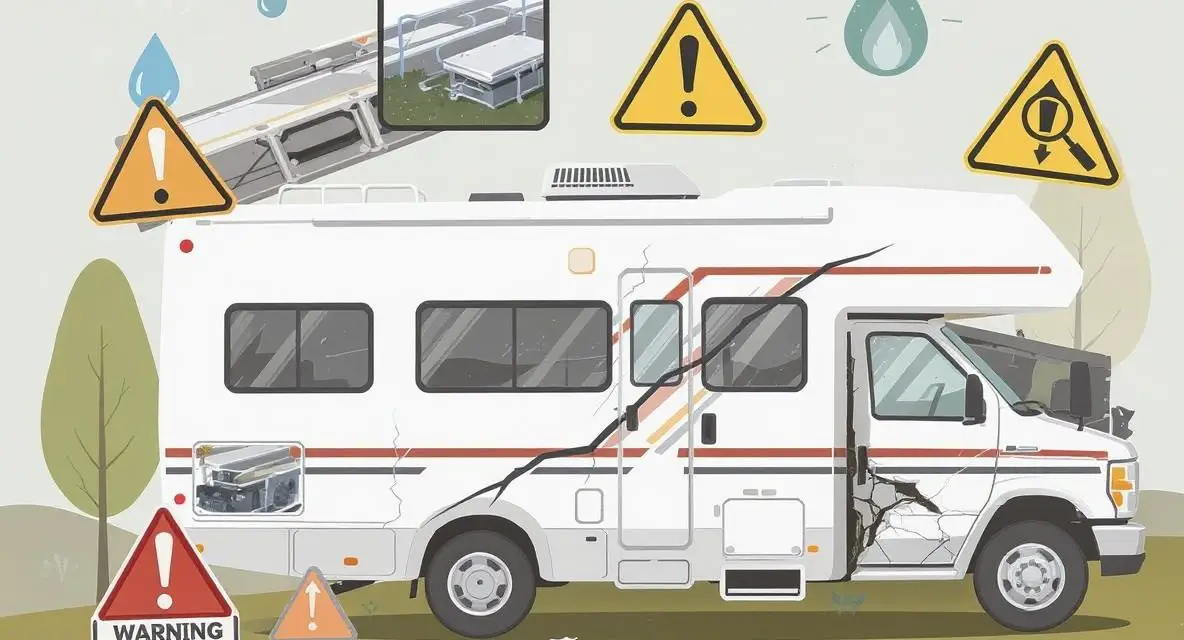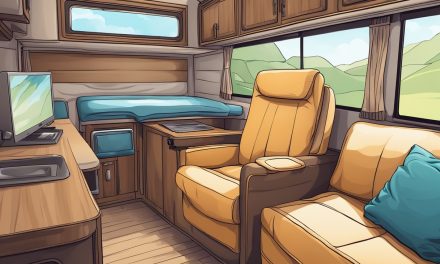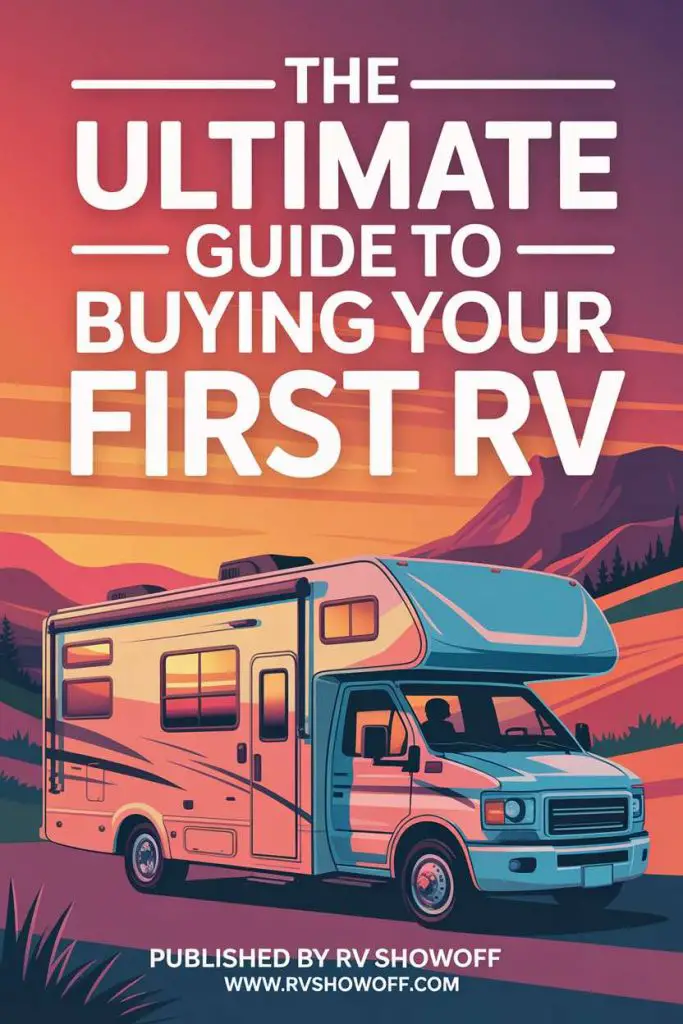Would you like to save this article?
You’ve saved up for months, maybe even years, dreaming of hitting the open road in your very own RV. But before you hand over that hard-earned cash, you need to know how to spot an RV lemon that could turn your road trip dreams into expensive nightmares.
According to RV industry experts, certain warning signs can save you thousands of dollars and countless headaches down the road. While a professional third-party inspection is always recommended before any RV purchase, there are five critical red flags you can easily check yourself that might indicate it’s time to walk away from that “perfect” deal.
These warning signs are so serious that they could mean the difference between years of happy camping and a recreational vehicle that becomes a money pit parked in your driveway. Let’s dive into the telltale signs that experienced RV technicians use to quickly identify problem RVs that aren’t worth your time or money.
1. Slide-Out Wood Rot and Caulking Problems
Your RV’s slide-outs are like the moving parts of a Swiss watch – when they work properly, they’re fantastic, but when they don’t, the entire mechanism falls apart. Water damage in slide-outs is shockingly common, with some RVs showing significant rot in as little as three years. The damage happens fast because most slide-out construction uses thin plywood that acts like a sponge when exposed to moisture.
To check for slide-out problems, extend all slides and walk around the outside of your RV. Look underneath each slide-out for water staining, discoloration, or any signs of moisture damage. If there’s a plastic film covering the bottom of the slide, press upward gently – you should feel a firm, solid surface. If the plastic moves up and down or feels spongy, that’s wood rot hiding behind the covering.
Key Statistics:
- Slide-out repairs can cost between $5,000-$10,000
- Some repairs require complete slide removal from the RV
- Water damage can occur in RVs as new as 3 years old
It’s like buying a house where the foundation is made of wet cardboard – technically still standing, but not for long! If you find squishy slide-outs, congratulations, you’ve discovered a very expensive sponge masquerading as an RV.
2. Salvage Title Red Flags
Not all salvage titles are created equal, and understanding why an RV was salvaged can mean the difference between a great deal and a disaster. Some salvage RVs, like those with cosmetic storm damage, can be excellent buys at significant discounts. However, flood-damaged RVs should be avoided completely – they’re ticking time bombs of electrical problems, mold issues, and structural damage that can take years to fully manifest.
When evaluating a salvage title RV, always ask for detailed documentation about the original damage. Storm damage from falling branches or hail might be acceptable if the price reflects the cosmetic issues. However, any RV that’s been underwater should get an automatic “thanks, but no thanks” response.
Key Statistics:
- Salvage title RVs can sell for $20,000-$30,000 below market value
- Flood-damaged RVs have ongoing problems for years after “restoration”
- Mold remediation in RVs can cost $5,000-$15,000
Buying a flood-damaged RV is like adopting a pet gremlin – it might look cute and harmless now, but wait until it gets wet again and multiplies into a whole family of expensive problems!
3. Mattress Mold Mayhem
Here’s something most RV shoppers never think to check: lift up that mattress and take a peek underneath. Unlike your home bed with slats that allow airflow, most RV beds have solid platforms that trap humidity like a terrarium. Combined with thin RV walls that are prone to condensation, this creates the perfect storm for mold growth.
RV mattress mold is incredibly common because of poor ventilation design and the reality of camping in varying climates. Water can run down walls and get trapped under the mattress, creating a breeding ground for mold that can pose serious health risks.
Key Statistics:
- RV walls are significantly thinner than house walls, increasing condensation risk
- Mattress replacement in RVs can cost $500-$1,500
- Mold remediation can make an RV uninhabitable during treatment
Finding moldy mattresses in an RV is like discovering your dream vacation rental has been doubling as a science experiment – technically you could sleep there, but would you really want to?
4. Frame Damage Drama
For travel trailers and fifth wheels, frame damage around axle attachment points is like finding cracks in the foundation of a house – it’s not just cosmetic, it’s a safety issue. Obvious frame cracks typically indicate two things: poor original design from the manufacturer and high mileage wear.
Frame damage can be repaired by a skilled welder, but it’s expensive and the RV isn’t safe to travel with until properly fixed. More importantly, frame problems often indicate that the RV has been subjected to stresses beyond its design limits, which could mean other hidden issues throughout the unit.
Key Statistics:
- Frame reinforcement and welding repairs can cost $2,000-$5,000
- Actively growing cracks make the RV unsafe for travel
- Frame problems often indicate other structural issues
Buying an RV with frame cracks is like buying a car with three wheels – sure, it might still roll, but your insurance company is going to have some very serious questions about your life choices!
5. Interior Water Damage Warning Signs
Water damage inside your RV is like termites in a wooden house – by the time you can see it, the problem is already extensive. Pay special attention to corners around skylights, vents, and windows, where most leaks start. Look for vinyl paneling that’s coming loose and “waving” in the breeze, or tiny bumps pushing up under the vinyl – that’s mold growth literally pushing the covering off the walls.
Water damage repair costs can quickly spiral into the tens of thousands of dollars because it often requires complete interior reconstruction. Soft spots in floors, swollen cabinet face frames, and splitting vinyl are all signs that water has been winning the battle against your potential RV purchase.
Key Statistics:
- Paneling replacement can cost thousands of dollars per section
- Water damage often requires complete interior reconstruction
- Mold behind vinyl surfaces can create serious health hazards
Buying an RV with extensive water damage is like buying a soggy cardboard box and expecting it to protect you from the elements – optimistic thinking, but probably not going to end well!
6. Body Separation from Frame
While this can happen to any RV, some brands have more history with body-to-frame separation issues than others. On Airstreams, you’ll see the rounded metal wrapper starting to tear away from the frame at the bottom. On Class A motorhomes, the separation might only be noticeable when test driving – the whole front end might shake up and down because it’s no longer structurally attached to the frame.
For Class C motorhomes, pay special attention to the connection between the chassis cab and the RV body. Look for gaps, separation, or signs of water intrusion where these components should be seamlessly joined.
Key Statistics:
- Body separation repairs often require specialized RV body shops
- Some separations are only detectable during test drives
- Airstream body repairs can be particularly expensive due to specialized aluminum construction
An RV with body separation is like wearing a coat that’s not attached to its sleeves – technically still clothing, but probably not going to keep you very comfortable when the weather gets rough!
The Bottom Line: When to Walk Away
These five warning signs aren’t just minor inconveniences – they’re deal-breakers that can turn your RV dreams into financial nightmares. If you spot any of these issues during your inspection, it’s time to thank the seller politely and move on to the next RV on your list.
Remember, a professional third-party inspection is always worth the investment for any RV you’re seriously considering. You can find trusted RV inspectors through resources like RigorRVInspection.com to help you make an informed decision.
Your perfect RV is out there – but it’s definitely not the one with soggy slide-outs, mystery mold, or a frame that looks like it went ten rounds with a heavyweight boxer!
SOURCES
- 5 Signs of a Lemon RV – Rigor RV Repair
- The 10 Most Common RV Water Leaks and How to Fix Them – KOA
- Water Intrusion Is One Of The Most Common Problems For Motorhomes
- RV Industry Death Spiral – Fifth Wheel Street
- Winnebago Hushes Grand Design RV Frame Problems – Hunterbrook






